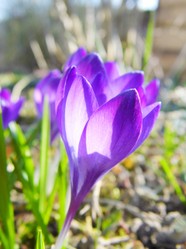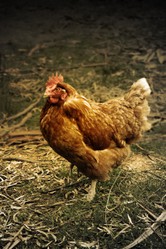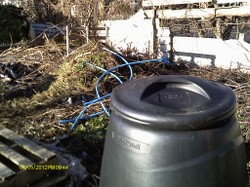Sitting in the car on the way back from the hospital yesterevening I remarked to Maureen that the crocuses in the hospital grounds were springing up, a riot of dark blue gainst the dullness of the season and visible in the lamplight.What, you may ask, was I doing at the hospital? Well so far only one other Wizzley writer knows, and she is family. Nine days ago, the day was fine and I was sipping tea before my planned morning at the allotment when Maureen burst into the room nearly in tears, saying "Baby's coming." Our daughter-in law had gone into labour at twenty seven and a half weeks, prematurely and was later to need an emergency caesarean. My third grandchild was on the way, far too early! The day's gardening did not happen. Later that day she delivered a fine, though small son who is now just out of intensive care and into the high dependency unit. But it has been a trying time for all, especially the two parents.
I usually use the car to get to the allotment, but the car is now in demand [we only own one car] as Maureen ferries members of the family to and from the maternity hospital. Yesterday Andrew and I took advantage of the fine weather and went for some digging. But I have had a few knee problems and decided to take a taxi, though we walked back. Happily the knee held up, the treatment had worked. We had a really productive day digging over some beds. Some years ago I told my Irish mother-in-law that Andrew digs like an Irishman, which mean energetically and well, she liked that; but already some work had to be missed out. I had been hoping to repair a roof panel on the greenhouse, but the job required step ladders, which we could not carry with us. I had intended to go to the allotment today [Andrew is at work] but the weather had turned very wet, so I gave it a miss.
Digging with a gammy knee is not ideal, but I had anointed it well with comfrey oil, as recommended by my doctor, and so I was able to work effectively. Together we dug over the ground and created a lovely tilth. I praised Andrew for his work, but he replied that when he worked for the National Trust for Scotland at the prestigious Threave Gardens he worked for an old gardener who would have called his work amateurish, but some old gardeners grow as gnarled in attitudes as ancient trees. The old fellow could make perfect tilth. I am not like him in attitude, I hope, and never want to be. But we were time limited as Andrew had to pick up his daughter [ my first grandchild] from nursery.
I will be carless almost all the time for several more days until my daughter-in-law is fit to drive again. But that's life.
Andrew is not the son whose wife has just given birth,for I have three sons and a daughter.









 TheThousand Year Gardenon 11/26/2025
TheThousand Year Gardenon 11/26/2025
 Women of the Gospelson 10/11/2025
Women of the Gospelson 10/11/2025
 Religious Gardenson 08/25/2025
Religious Gardenson 08/25/2025
 Doctor of the Church: John Henry Newmanon 08/03/2025
Doctor of the Church: John Henry Newmanon 08/03/2025




Comments
No kind of plants grows naturally in containers. All have a niche in nature, so a tin can or pot is not the only env ironment. For a plant.
Thank you for your comment below in answer to my previous observation and question.
Kate Mosse, in her The Mystery of the Acid Soil contribution to Agatha Christie: 12 New Mysteries, has Jane Marple hinging soil rejuvenation, soil remediation upon Phacelia species.
BBC Gardeners World Magazine online holds to Phacelia species as cut flower, green manure and pollinator plant.
So might Phacelia species manage in a can or must it -- ;-D -- be free-grown?
Yes. Most plant pots have drainage holes.
Thank you for your comment below in answer to my previous, same-day question.
Some Unitedstatesians have the potted can rest atop the soil surface even as others have it grounded to anywhere from just about an inch (2.54 centimeters) down to far enough down that only the rim and its plant may be seen.
Might you, in the above three scenarios, have drainage holes in the can bottom?
It is what is contained in the cans that can do something to remedy demineralisation.
Some Unitedstatesians either leave, or plant single small-sized plants in, empty tin cans -- such as those for canned fruits, soups and vegetables -- in their back yards.
Businesses especially such as grocery stores, and educational institutions and government offices often maintain grassy, treed islands at their parking-lot entrances. The aforementioned islands manifest big rocks.
The two above-mentioned styles, the first residential and the second commercial, offer their soils leached minerals.
Would the above strategies be a little, not at all, very effective as mineral suppliers to low-mineral soils?
Yes.
Three comment boxes down you count among "supplemented natural soil enhancers" leaf mould, manure and seaweed.
Does compost figure with the same standing as the aforementioned trio?
I don't know much about Australian soils.
Thank you for your comment below in answer to my previous observation and question.
It's a bit surprising to me that Australia is not among the mineral content-depleted soil list that includes America and Europe.
Is Australia not as intensively cultivated soil-wise as America and Europe?